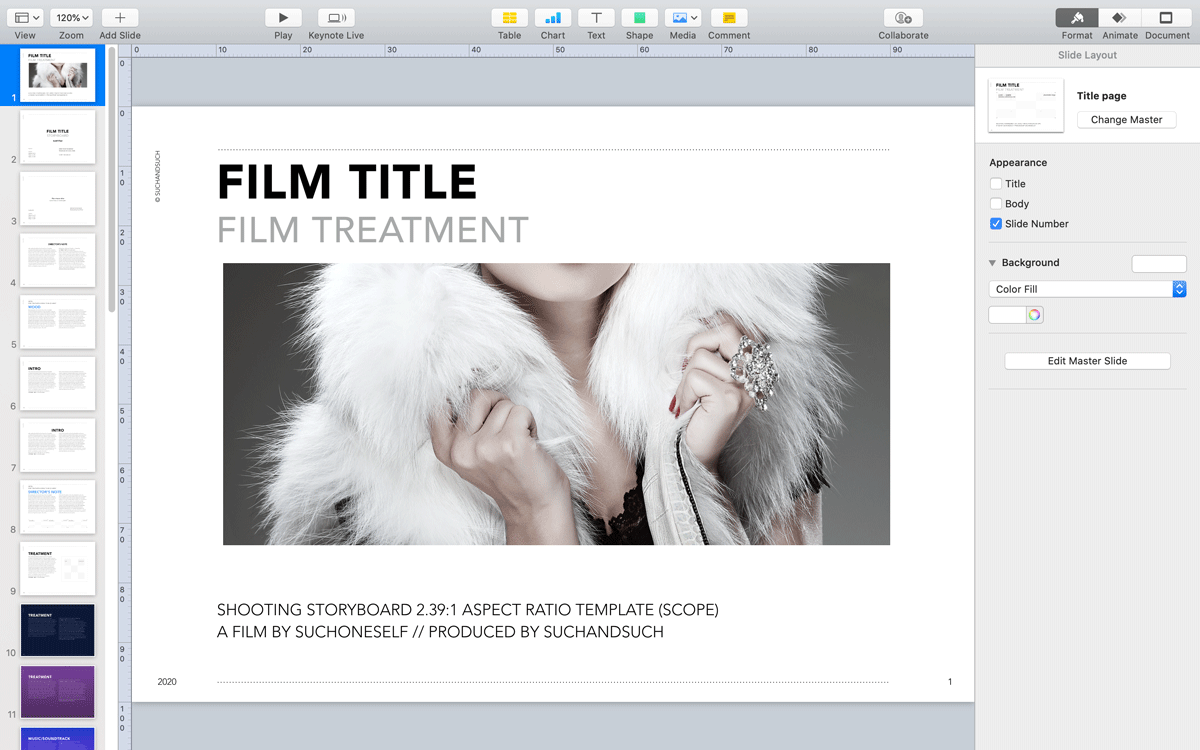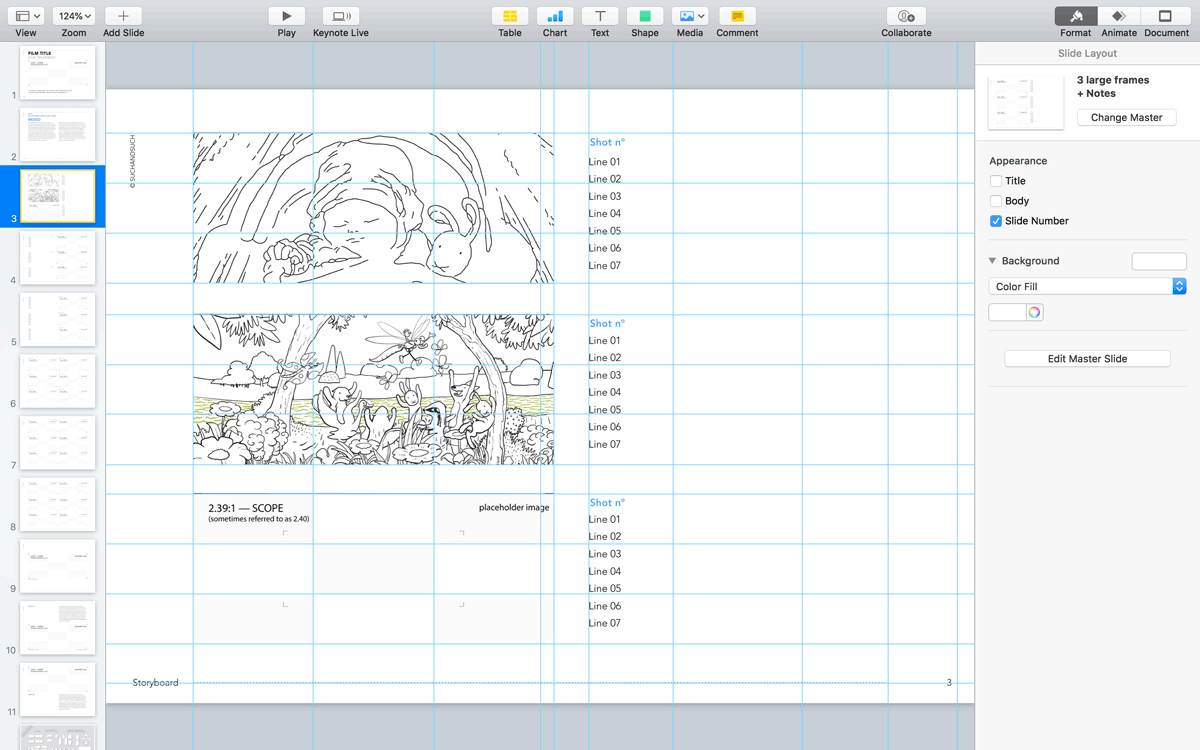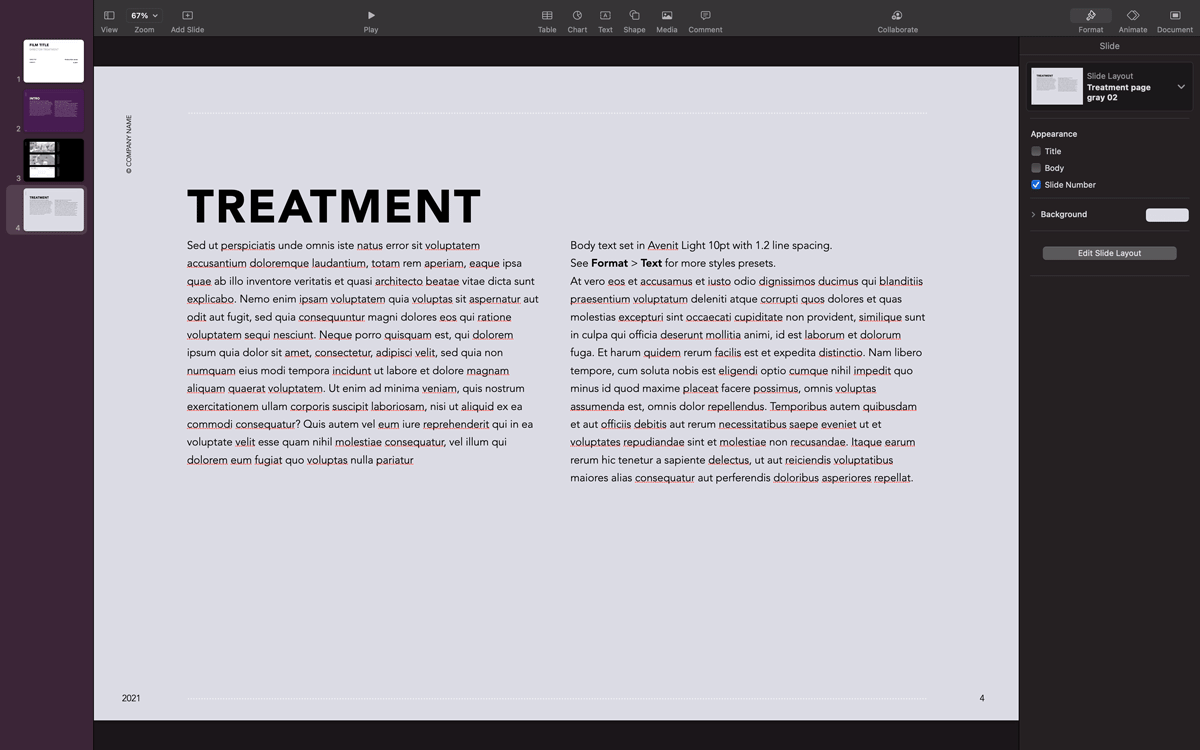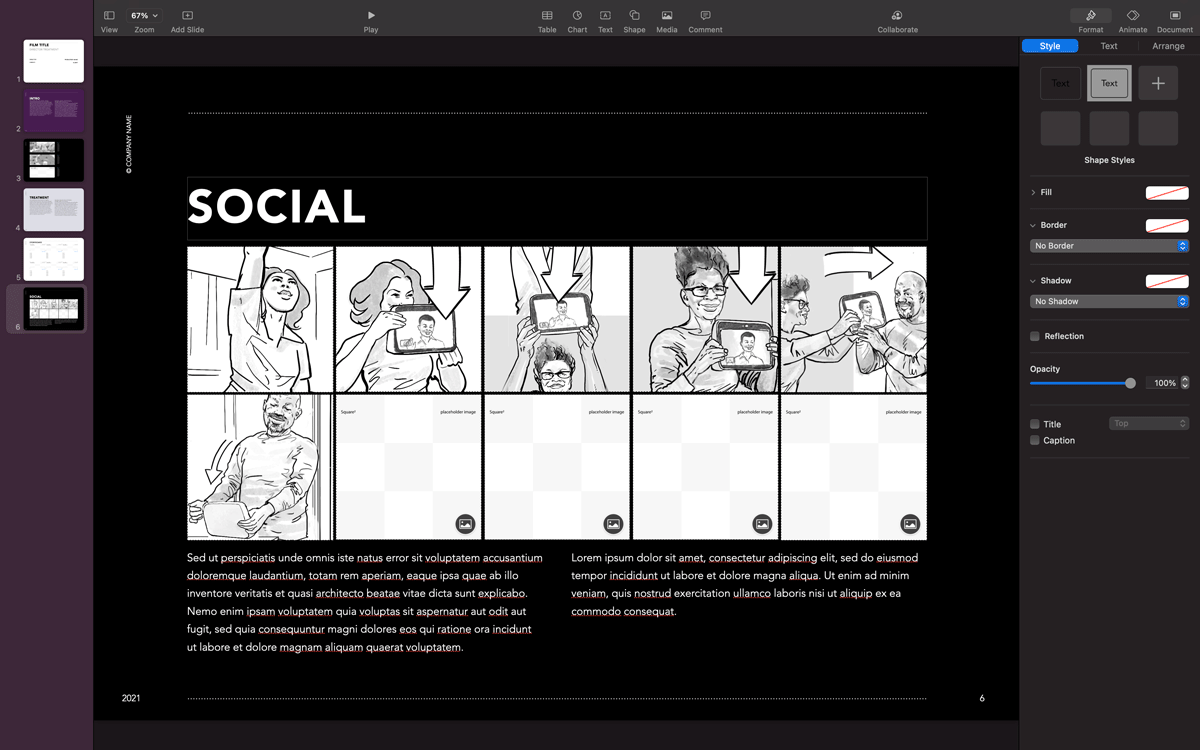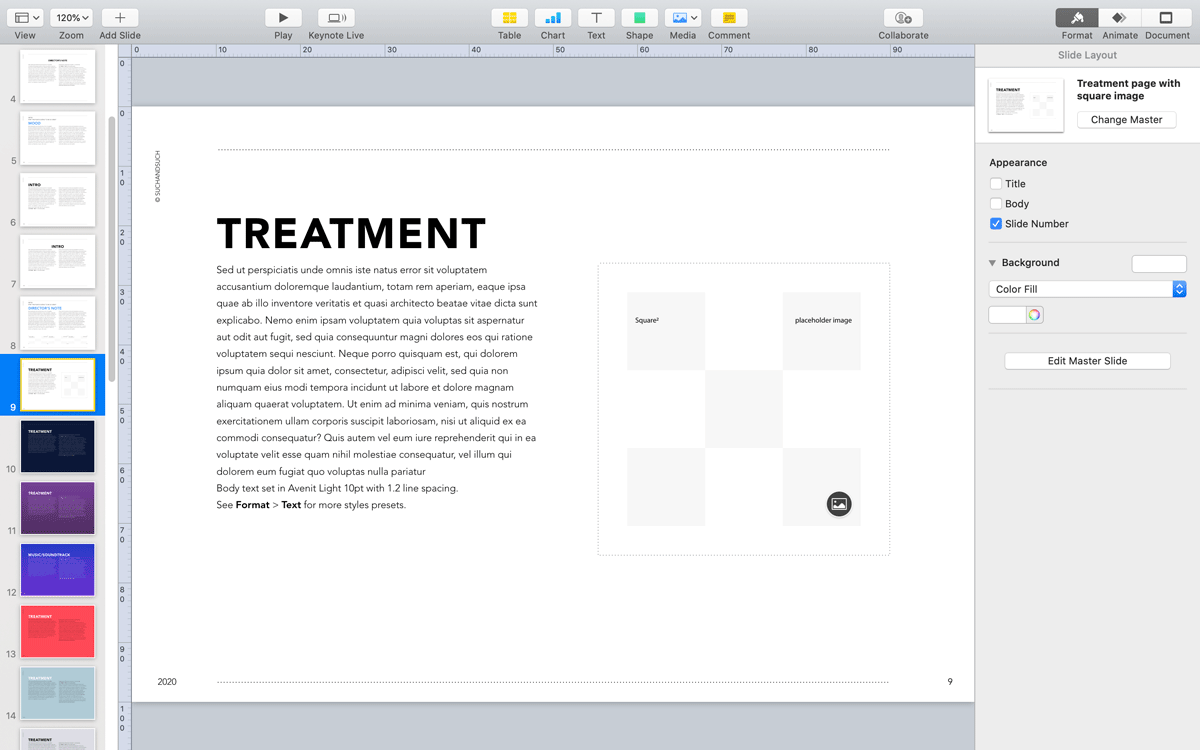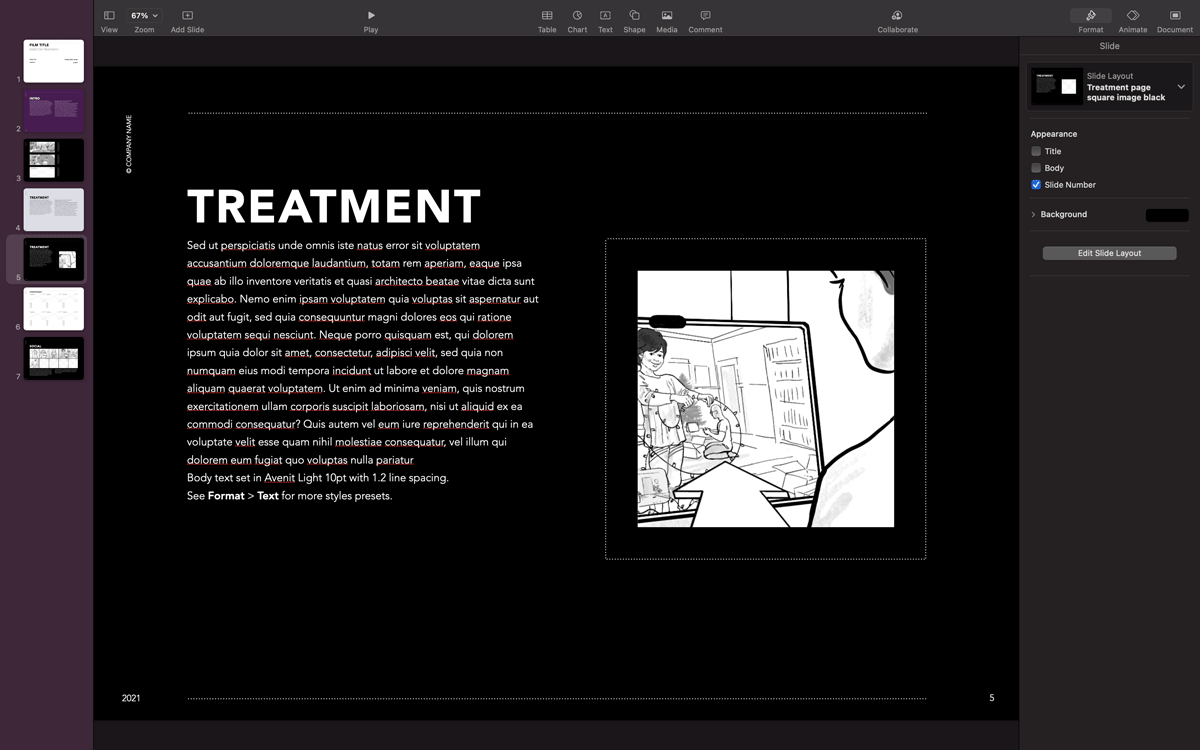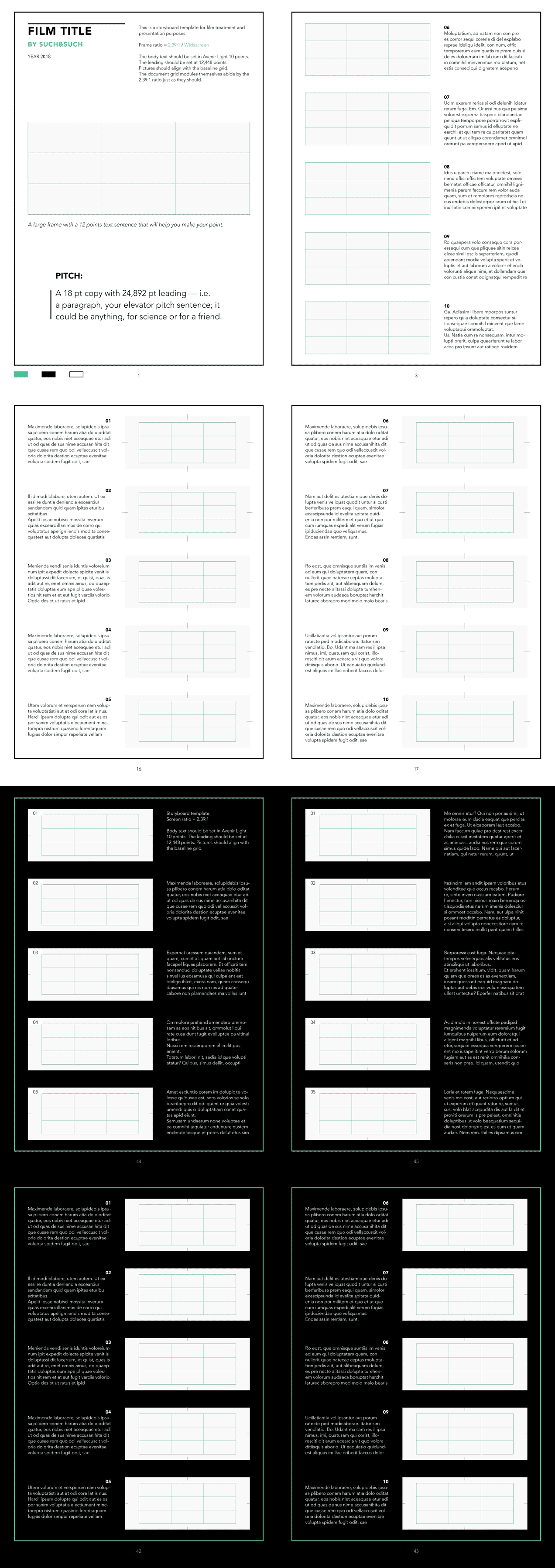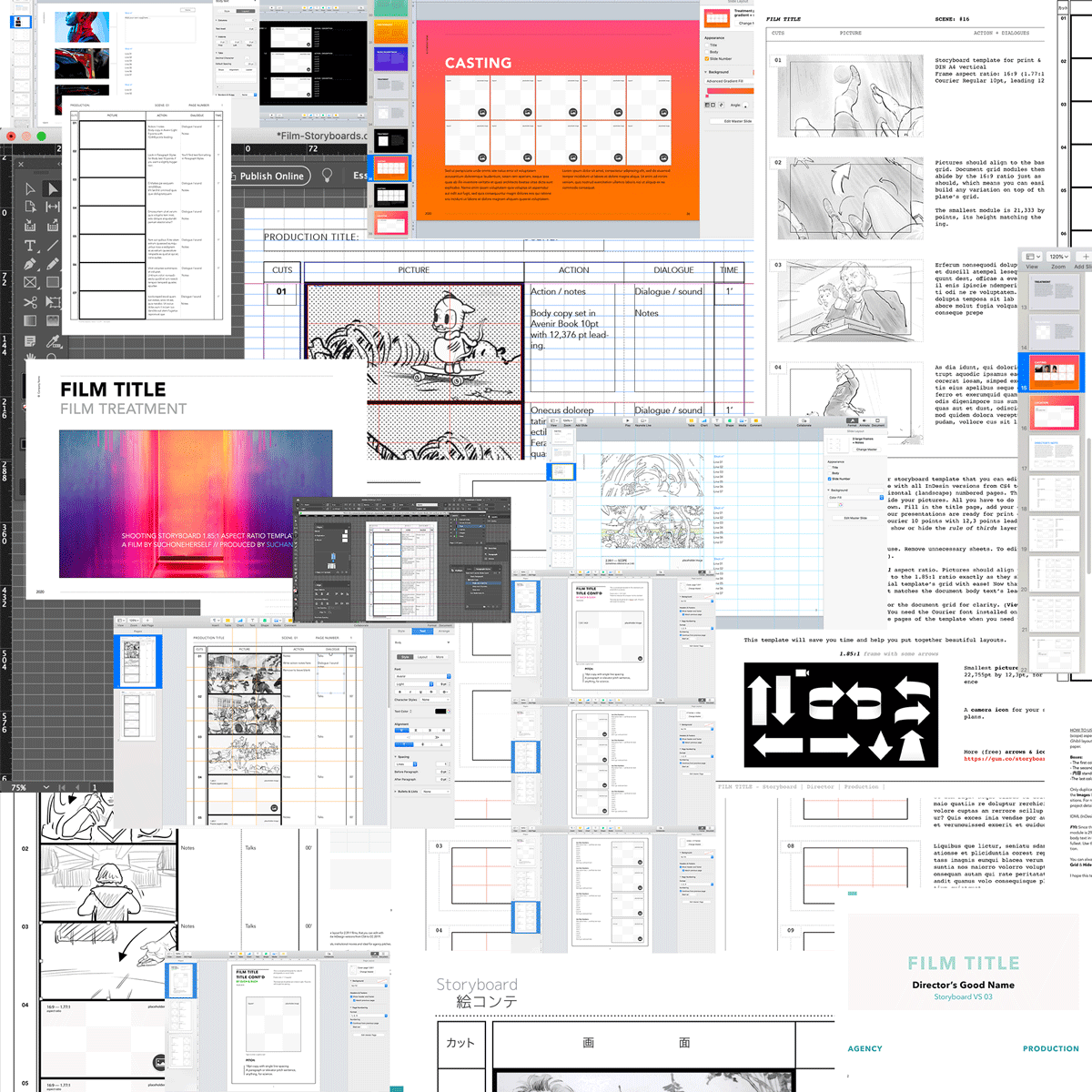A template for music videos and TV commercials pitches
Title or cover page
Start with a cover or a title page. The title often carries the whole project. You have an opportunity to put credits upfront. Or play the mystery card and leave this for the last page.
Credits include:
- The client always loves to see her name here. Or her logo, and make that logo bigger while you are at it!
- The Agency name should appear too. Even though from now on, you will be responsible for the execution of their big idea.
- Production The craft-workers, AKA the crew, are the people who make it happen.
- Film Director, sign it, own it, put your name on it!
Foreword or introduction page
Think about it as your sale pitch. Use a one-liner or go deep into a long copy. It is your hook, your chance to explain why we should read your treatment further. Directors sometimes use a purely visual bait.
Script, synopsis, or treatment page
- Your script or story is the hero here. Treat your copy as the hero of the hour. You will never regret care spent over your writing or hiring a good copywriter!
- In general, the shot list is not part of the treatment, but this depends on the project.
Casting
This section provides the client with a gallery of character samples. At the pitch stage, you may not have a complete casting yet. Show what style of people you are thinking about, tell us about their characters. Refer to actors or real people.
Location
This section is about the environment and mood, the set design. Does the action take place in different locations? Inside or in the wild? What role will architecture play? Do you need custom props? Furniture? Will you need to build a set?
Costume design/props
Costumes set the atmosphere of the whole film and evoke a period in history. Even casual contemporary clothes provide crucial information to the viewer, and the wardrobe designer will carefully plan every item to match the film style.
Music/soundtrack
This section is about your audio ideas, whether sounds or accompanying music. Music is über valuable in filmmaking. Indeed it is almost music alone that conveys the emotion in a picture.
Choreography
If you work on a music video, dance is likely at the forefront of your film. Even if it may not be the case for other projects, it is useful to think of a blueprint for the movements to be captured by the camera. What happens within the space, what matters in terms of location and props within the action. Think of it as the plan for what needs to translate into the frame.
Cinematography/Photography
This section is your mood board to set the emotional and aesthetic tones of your film. Many directors use stock photography. If time permits and you have the relevant body of work, use your own. Think about colors, hues, shade, and lighting and their importance within the story.
Production notes
How will you use visual effects, and how will they affect the story? VFX or SFX? Will you use stunts? This section is an opportunity to give an overview of how the film will look and provide references from other movies.
Production storyboard
A production storyboard sometimes complements a film treatment and can be added to create a sense of the whole picture. Sometimes directors use their shots list instead. In advertising, a storyboard is more than a planning tool. In effect, the agency uses a storyboard to sell their campaign ideas, and later on, the director or the production comes up with a shooting board.
The shooting storyboard is a blueprint for the shoot. It helps the director to plan and communicate with the crew. It acts as insurance as well as being a selling tool. While less detailed than the agency board, it looks closer to the final product.
Animatic
Sometimes it is even better to provide an animatic along with your film treatment. That gives the client a sense of timing and pace, complete with sound and atmosphere.
Outro/Thank you note
A Thank you note is an invitation to the client. Remember, you want the client to continue working with you. You must be sincere about how excited you are to be on board.
Apple Keynote themes
Here are ready-to-use film treatment templates for Apple Keynote to get you started. They offer layout variations so you can focus on filling in the presentation with ideas and pictures.
Apple Keynote film treatment theme for 16:9 films
Apple Keynote film treatment theme for 2.39:1 (Scope) films
A similar Apple Keynote film treatment theme formatted for 2.39:1 (Scope) films
A sample of a cover page
A storyboard sample page
An intro text sample page
A page sample with square frames
InDesign templates
Here is a ready-to-use film treatment template for Adobe InDesign if you are looking for more options:
This Indesign storyboard template has a film treatment section as well as light and dark modes
Storyboard and film treatment templates bundle
This bundle lets you get all the paid templates at once and includes the new templates published within the next year and free updates to all the templates for one entire year.
Sign-up for updates about storyboard, film treatment & filmmaking templates.
Recap
Here are the elements commonly used in film treatments presentation:
- Title or cover page
- Client
- Agency
- Production
- Director
- Optional foreword
- Treatment or script
- Casting
- Location
- Music/Soundtrack
- Choreography (optional)
- Cinematography/Photography
- Production notes
- Storyboard (optional)
- Animatic (optional)
- Thank you/contact page
The wording and order will vary in function of the project. For instance, you may have a film where the music will play the lead role (one may argue that it is almost always the case), so you’ll emphasize music and discard other points.
If you want an animatic or a storyboard to compliment your film treatment, I may be able to help as a story artist.
Thanks to Paul Regan1 for reading a draft of this.
-
Paul is the World’s #1 TVC Director’s Treatment Writer. Consider Paul if you need help with your director’s treatment. ↩

